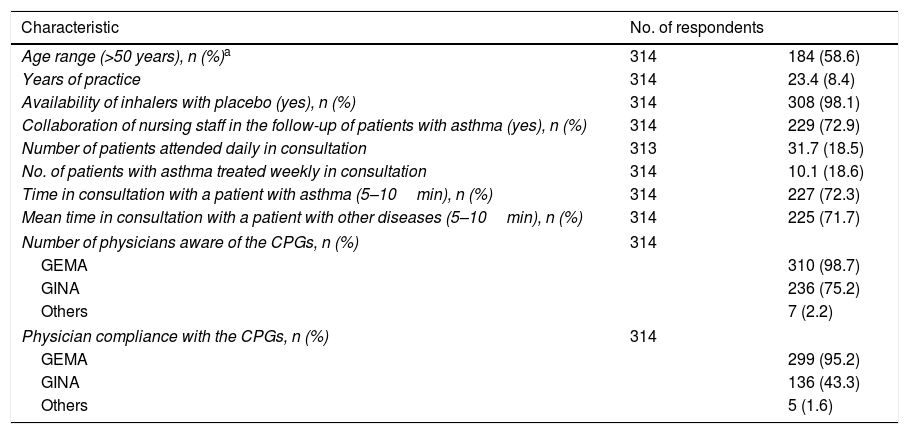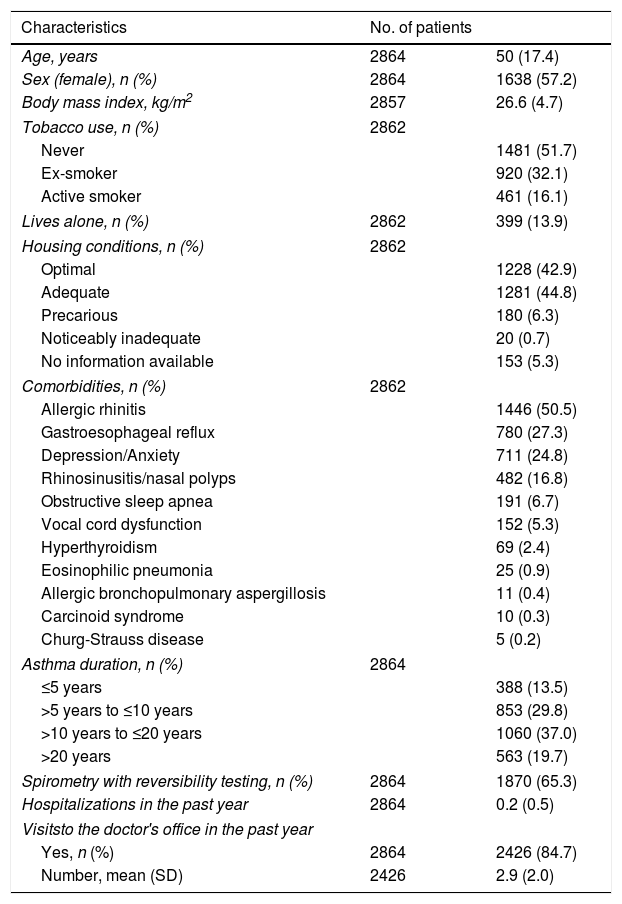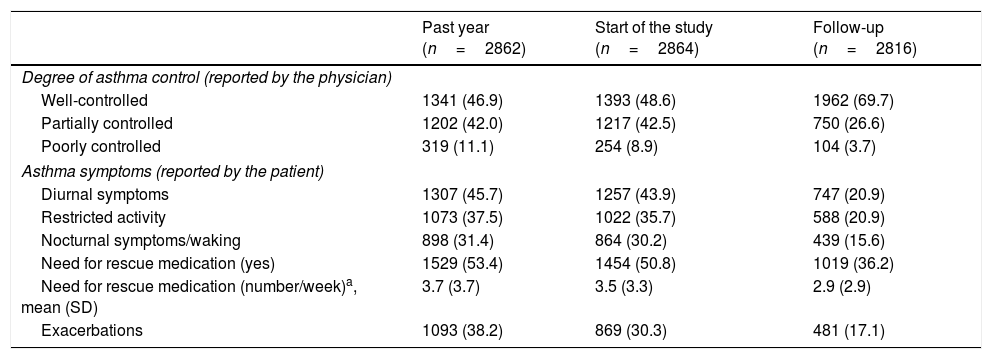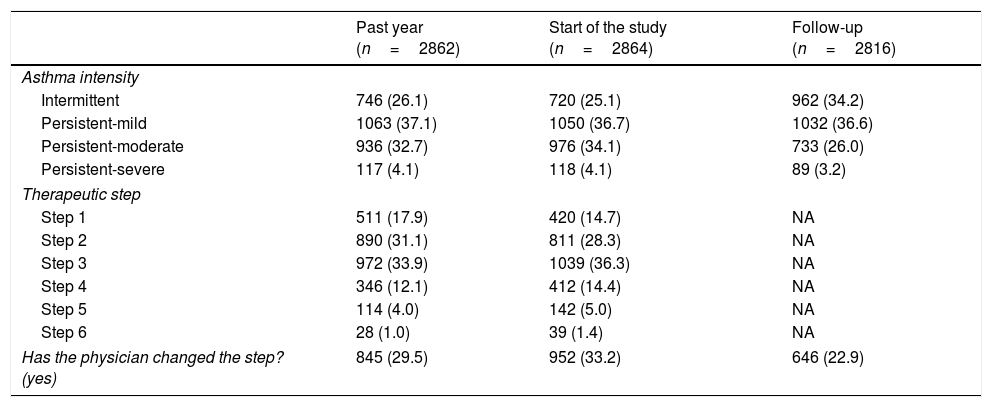To assess the degree of compliance with the recommendations of the 2009 and 2015 versions of the Spanish guidelines for managing asthma (Guía Española para el Manejo del Asma [GEMA]) and the effect of this compliance on controlling the disease.
Material and methodsWe conducted an observational ambispective study between September 2015 and April 2016 in which 314 primary care physicians and 2864 patients participated.
ResultsUsing retrospective data, we found that 81 of the 314 physicians (25.8%; 95% CI 21.3–30.9) stated that they complied with the GEMA2009 recommendations. At the start of the study, 88 of the 314 physicians (28.0%; 95% CI 23.4–33.2) complied with the GEMA2015 recommendations. Poorly controlled asthma (OR, 0.19; 95% CI 0.13–0.28) and persistent severe asthma at the start of the study (OR, 0.20; 95% CI 0.12–0.34) were negatively associated with having well-controlled asthma by the end of the follow-up. In contrast, compliance with the GEMA2015 recommendations was positively associated with a greater likelihood that the patient would have well-controlled asthma by the end of the follow-up (OR, 1.70; 95% CI 1.40–2.06).
ConclusionsLow compliance with the clinical guidelines for managing asthma is a common problem among primary care physicians. Compliance with these guidelines is associated with a better asthma control. Actions need to be taken to improve primary care physician compliance with the asthma management guidelines.
Evaluar el grado de seguimiento de las recomendaciones de las versiones de la Guía española para el manejo del asma (GEMA 2009 y 2015) y su repercusión en el control de la enfermedad.
Material y métodosEstudio observacional y ambispectivo realizado entre septiembre del 2015 y abril del 2016, en el que participaron 314 médicos de atención primaria y 2864 pacientes.
ResultadosUtilizando datos retrospectivos, 81 de los 314 médicos (25,8% [IC del 95%, 21,3 a 30,9]) comunicaron seguir las recomendaciones de la GEMA 2009. Al inicio del estudio, 88 de los 314 médicos (28,0% [IC del 95%, 23,4 a 33,2]) seguían las recomendaciones de la GEMA 2015. El tener un asma mal controlada (OR 0,19, IC del 95%, 0,13 a 0,28) y presentar un asma persistente grave al inicio del estudio (OR 0,20, IC del 95%, 0,12 a 0,34) se asociaron negativamente con tener un asma bien controlada al final del seguimiento. Por el contrario, el seguimiento de las recomendaciones de la GEMA 2015 se asoció de manera positiva con una mayor posibilidad de que el paciente tuviera un asma bien controlada al final del periodo de seguimiento (OR 1,70, IC del 95%, 1,40 a 2,06).
ConclusionesEl escaso seguimiento de las guías clínicas para el manejo del asma constituye un problema común entre los médicos de atención primaria. Un seguimiento de estas guías se asocia con un control mejor del asma. Existe la necesidad de actuaciones que puedan mejorar el seguimiento por parte de los médicos de atención primaria de las guías para el manejo del asma.
Article
Diríjase desde aquí a la web de la >>>FESEMI<<< e inicie sesión mediante el formulario que se encuentra en la barra superior, pulsando sobre el candado.

Una vez autentificado, en la misma web de FESEMI, en el menú superior, elija la opción deseada.

>>>FESEMI<<<










